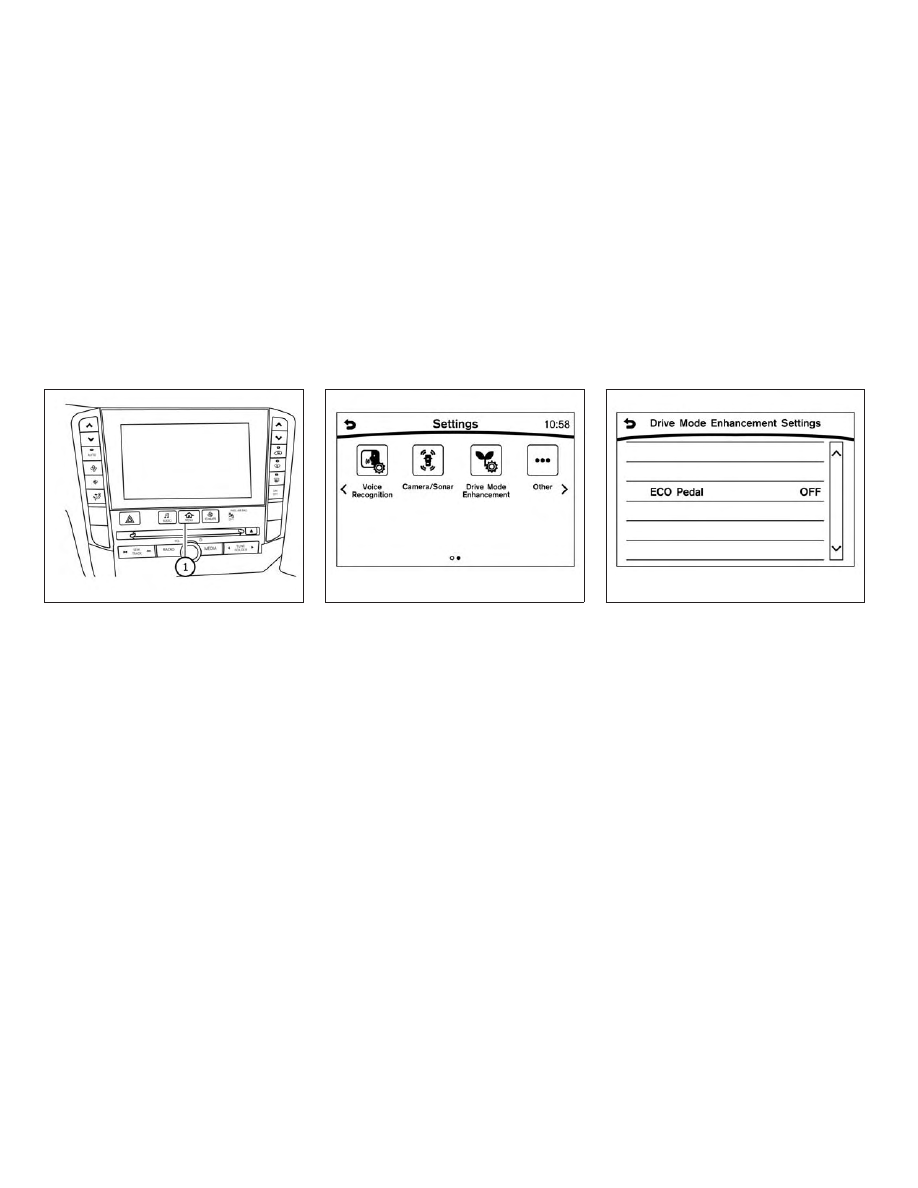Infiniti QX50 (2019 year). Instruction - part 18

Setting ECO pedal reaction force
1. Press the MENU
䊊
1
button and select
“Settings” in the lower display.
2. Select “Drive Mode Enhancement.”
3. Select “ECO Pedal” and then select ei-
ther “OFF,” “Soft” or “Standard” in the
lower display. When the ECO pedal sys-
tem is turned off, the accelerator will
operate normally.
LSD2965
LSD2695
LSD2696
5-32
Starting and driving